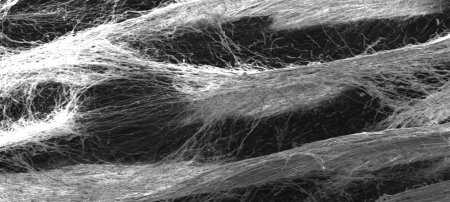Clean Genes: Michigan Tech Chemist Culls the Good Synthetic DNA from the Bad

Birds do it, bees do it. Even scientists in labs do it. But the scientists can’t hold a candle to the birds and the bees, who can make gobs of primo DNA without even thinking about it.
DNA is a critical element of gene therapy, and scientists working to develop cures for diseases make it with synthesizers. Unfortunately, synthesizers don’t do nearly as good a job as cells in stringing nucleic acids together to make DNA, and many of the resulting sequences—called truncated DNA—are too short and must be discarded.
Isolating perfect DNA sequences is very expensive, so expensive that some clinical trials for gene therapy drugs have been put on hold for lack of funding. A discovery by Shiyue Fang, an assistant professor of chemistry at Michigan Technological University, could change that.
“Our method can provide high-quality, pure synthetic DNA by the kilogram at a much lower cost,” he says. It could also be used to purify RNA and other biological molecules such as peptides that have potential as pharmaceuticals.
Fang adds monomers—molecules that can link together into polymers—to the nucleic acids in a stock DNA synthesizer. Truncated DNA won’t attach to the monomers, but all other strands of DNA will. Then, once the synthesis is complete, the monomers join together to form a long polymer hanging with perfect DNA sequences, like clean laundry on a clothesline. “Then we just snip them off,” says Fang. “It’s a nice trick.”
Fang’s process does not weed out those few DNA sequences that are too long or are missing a nucleic acid. “Fortunately, these impurities exist only in minute quantities,” he says.
Fang is now tweaking the process so that the monomers attach only to the truncated DNA. It’s relatively easy to wash the polymers out of solution, leaving behind the perfect strands.
Fang has filed a patent application on the process and hopes it can soon be put to good use by medical researchers. And, as DNA drugs enter the market, his purification method could drastically reduce manufacturing costs, benefiting patients with genetic and many other diseases and their insurers, including Medicare.Fang’s work has been funded by the National Science Foundation and published in the American Chemical Society Journal—Organic Letters as a rapid communication. PhD student Suntara Fueangfung is a coauthor on the paper, “Scalable Synthetic Oligodeoxynucleotide Purification with Use of a Catching by Polymerization, Washing, and Releasing Approach.”
Michigan Technological University is an R1 public research university founded in 1885 in Houghton, and is home to nearly 7,500 students from more than 60 countries around the world. Consistently ranked among the best universities in the country for return on investment, Michigan's flagship technological university offers more than 120 undergraduate and graduate degree programs in science and technology, engineering, computing, forestry, business, health professions, humanities, mathematics, social sciences, and the arts. The rural campus is situated just miles from Lake Superior in Michigan's Upper Peninsula, offering year-round opportunities for outdoor adventure.




Comments